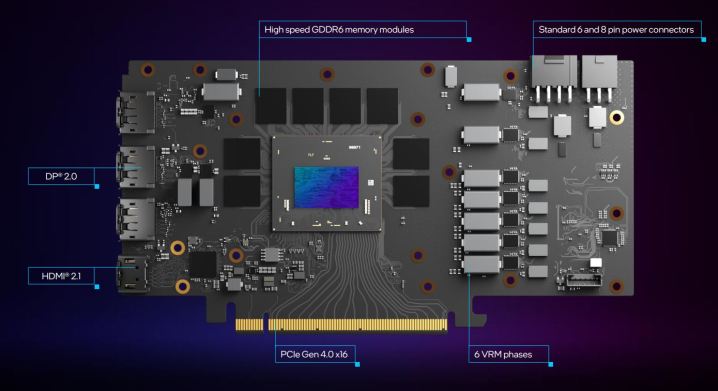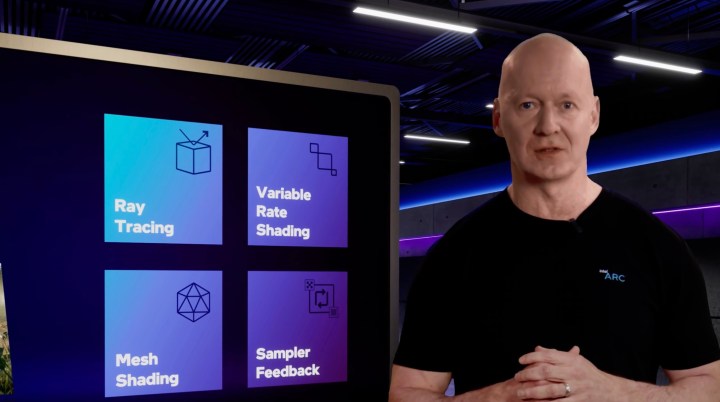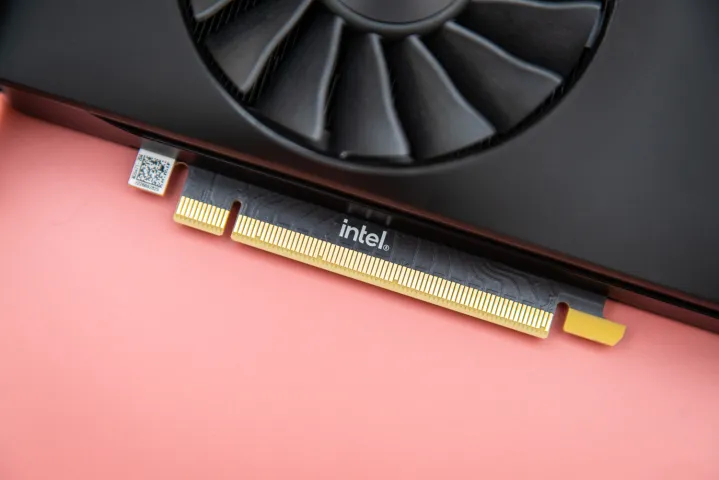Intel’s Arc GPUs have made a significant impact in the gaming market, positioning themselves among the top graphics cards available. Catering to budget PC gamers, Intel has solidified its place as a key player in the gaming graphics card industry, with attention now turned to their next generation of GPUs, codenamed Battlemage.
While specific details such as release dates, specs, and pricing information for the Battlemage GPUs are still pending, Intel has been dropping hints about the upcoming graphics cards over the past year, building anticipation among tech enthusiasts.
Intel Battlemage: Specs

While official specs for the Battlemage GPUs are yet to be confirmed by Intel, rumors circulating within the industry suggest exciting possibilities. Initial leaks, such as those from RedGamingTech, indicated that the flagship card could boast 64 Xe cores, doubling the capacity of the current A770 model and introducing a new architecture. More recent speculation suggests a slight adjustment to this initial claim.
Recent updates from RedGamingTech have revised the rumor, now suggesting that the flagship GPU may feature 56 Xe cores. This considerable increase in core count, along with clock speeds potentially reaching up to 3GHz and a substantial 112MB of L2 cache, presents an exciting prospect for the Battlemage series.
Of particular interest is the mention of the Adamantine cache, a novel cache technology developed by Intel for CPUs. This cache, similar to AMD’s 3D V-Cache, entails stacking additional cache directly on the die, providing a level 4 cache approach. RedGamingTech hints at Intel incorporating a sizable 512MB of Adamantine cache in the flagship Battlemage chip.
Additionally, leaks suggest the existence of a model with 40 Xe cores in development, featuring a 192-bit memory bus and excluding the Adamantine cache. This model appears to align more closely with realistic expectations, hinting at a potential flagship position due to anticipated challenges with profit margins for the 56 Xe core variant.
While final specifications remain subject to change, leaks strongly indicate a focus on boosting Xe cores for the Battlemage series. Intel seems to be working on multiple models akin to the Alchemist lineup, hinting at potential variations following the initial GPU releases.
Intel Battlemage: Pricing and Release Date

Anticipated for a potential launch in the second half of 2024, the Battlemage series might make an appearance earlier than expected. Recent statements from Intel’s Tom Petersen suggest that the hardware side of Battlemage is near completion, indicating progress towards finalizing the next-gen GPUs.
A shipping manifest revealing the presence of two Battlemage GPUs, designated for research and development purposes, further solidifies Intel’s advancement towards the validation phase. Moreover, Intel’s engagements with Japanese media outlets hint at a prospective GPU launch in 2024.
Despite conflicting opinions from various sources, Intel’s keynotes at events like Computex offer promising opportunities for unveiling more details about the Battlemage series. Pricing details remain undisclosed, but Intel’s historical commitment to value-driven products suggests a continued emphasis on affordability.
Speculations point towards a flagship card priced around $500, but these estimations are purely speculative at this stage. With a focus on delivering superior performance, Intel seems poised to introduce a high-quality flagship model within the competitive pricing segment.
Intel Battlemage: Architecture

Building upon the Xe architecture of Alchemist GPUs, Intel introduces the Xe2 architecture for the Battlemage series. While details regarding specific architectural features are scarce, hints suggest potential collaborations with TSMC for manufacturing, potentially utilizing the N4 node for superior performance.
Intel’s streamlined lineup approach with the Xe2 architecture indicates a more focused segmentation, with distinct variants catering to varying power requirements. The Xe2-LPG model is tailored for low-power applications, while the Xe2-HPG variant targets high-performance discrete GPUs.

Internal leaks reveal exciting advancements within the Xe2-HPG variant, emphasizing next-gen memory subsystems, compression technology, improved ray tracing capabilities, and micro-architectural enhancements. Notably, Intel’s AI-driven compression research could play a pivotal role in addressing VRAM optimization challenges prevalent in modern games.
Intel Battlemage: Performance

Performance benchmarks and concrete details regarding the Battlemage series are currently scarce, with Intel emphasizing software development for the upcoming GPUs. Insights from previous generations highlight the critical role of optimized software in achieving superior performance outcomes.
Speculations point towards Intel targeting competitors like the RTX 4070 with their flagship Battlemage GPU, aligning with the competitive landscape in the mid-range price segment. While initial rumors hinted at comparisons with the RTX 4080, practical considerations suggest a more targeted approach in hardware optimization.
Intel’s strategy for capturing market share before the release of next-gen GPUs from competitors like AMD and Nvidia indicates a proactive stance towards establishing a competitive foothold in the evolving graphics card market.
Editors’ Recommendations



